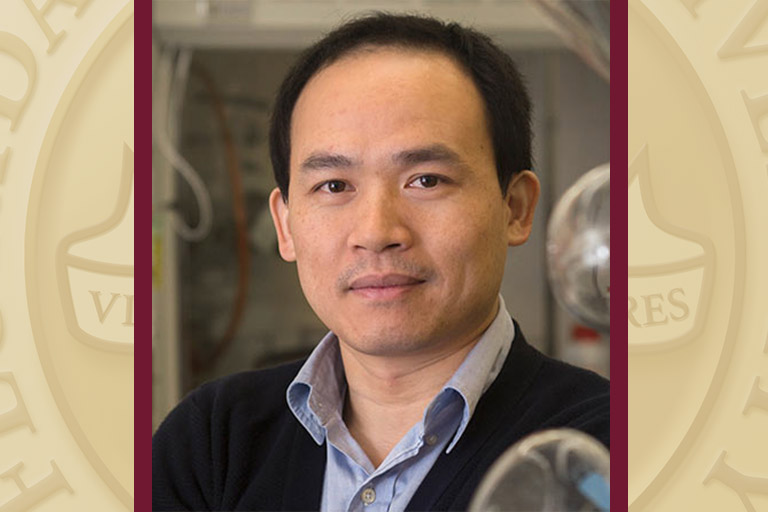Turning red: FSU researchers develop new method to produce next-gen LED

A Florida State University research team has developed a method to create red-emitting LEDs, or light-emitting diodes, with next-generation materials.
Professor of Chemistry and Biochemistry Biwu Ma and other FSU researchers published their work in the scientific journal Advanced Materials.
Ma and his team engineered a small molecular change to address the low conductivity of zero-dimensional (0D) organic metal halide hybrids — compounds made of metal and halogen — and produced a new material that emits highly efficient red light.
When LEDs use this hybrid material as an emitting layer, it has an external quantum efficiency of 5%. Quantum efficiency is how effectively devices convert the energy of electrons into photons, ultimately creating a visible light. Other organic LEDs have rates at about 20%, but the FSU team’s work is among the best value reported to date for electroluminescent devices based on this class of hybrid materials.
“They are performing well, but also are ecofriendly and non-toxic,” Ma said.
Electrically driven LEDs, or electroluminescent devices, have a wide range of applications, from full-color displays to solid-state lighting. Scientists and engineers have developed various types over the past few decades, including LEDs based on inorganic semiconductors, organic LEDs (OLEDs), quantum dot-based LEDs (QDLEDs), and more recently, LEDs based on metal halide perovskites (PeLEDs).
Ma and his collaborators have found significant success creating efficient and stable PeLEDs. However, while metal halide perovskites show great potential, there are also health and environmental concerns because most of them contain lead.
Ma’s team and others have also explored perovskite-related hybrid materials, such as highly luminescent, lead-free organic metal halide hybrids. However, these materials have not demonstrated enough conductivity for electrically driven LEDs.
The new molecular engineering approach in this work has addressed the issues of low conductivity.
“We can clearly see the effectiveness of molecular engineering of organic cations to improve the performance of organic metal halide hybrids for device applications, which we believe will open up tremendous new opportunities for this class of hybrid materials.” Ma said.
This work was supported by a team from the FSU Department of Chemistry and Biochemistry and the FSU Department of Physics.
Graduate students He Liu, Tunde Blessed Shonde, Fabiola Gonzalez, Oluwadara Joshua Olasupo, Sujin Lee and Iqra Fatima contributed to this research, along with undergraduate student Derek Luong.
FSU Associate Professor of Chemistry Kenneth Hanson, Chemistry Associate in Research Xinsong Lin, Scientific Research Specialist J.S. Raj Vellore Winfred and Department of Physics Research Specialist Eric Lochner are also co-authors on this study.
This work was supported by the National Science Foundation.

